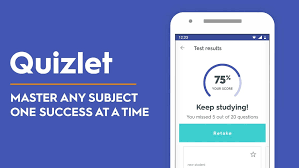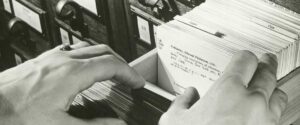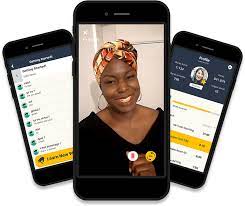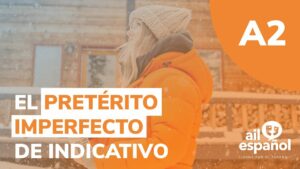12 Tips About How to Make Good Flashcards for Mastering New Vocabulary
Flashcards are nearly ubiquitous with studying, especially when you're learning a new language.
But, not everyone loves them. In a recent poll, nearly one-third of language students told us that they don't use flashcards at all.
And, it's easy to understand why. In a study in 2015, only 1% of students remembered after one week what they saw on a flashcard.
Don't give up on flashcards quite yet, though. Give me five minutes, and I'll show you how to make flashcards effective and fun!
Paper or App Flashcards
This is primarily a point of preference, but there are pros and cons worth considering. In each "tip" section below, I tell you whether paper-based or app-based flashcards best support this particular study tip.
I also used these same seven flashcard study tips to determine which flashcard apps are best for studying a foreign language, so if you are interested in online tools, then you should check out this article.
In this companion article, we spoke with 144 language learners and dissected five apps. I decided to use a combination of Quizlet and Memrise, for now.
Stating my bias for the sake of transparency, I'm not a fan of paper flashcards. I simply don't have the time or patience to make them anymore.
That said, if I did have the time and patience, I'd still use these exact same 12 study tips below to maximize my flashcard study time.
Without further ado, the 12 flashcard study tips are...
1) Make Your Own Study Flashcards
One of the most important parts of learning is the act of doing:
- Intaking new information
- Grappling with it in your brain – trying to understand it
- Creating something new with it – synthesizing it into knowledge
The process of creating something creates strong neural pathways in your brain, which are the physical mechanics of how we remember everything. Typically, the more mental effort we put into something, the more neurons that fire. And, as neuroscientists like to say, "neurons that fire together, stay together."
One of the best ways to remember anything is to teach it, explains Dr. Marty Lobdell, a former psychology professor at Pierce College, in this video with more than 12 million views. Of course, he did not invent this idea. Most attribute this learning method to Richard Feynman.
Making flashcards is a version of teaching yourself; it's an act of doing.
Arguably, there is more "making" when you use pen and paper, so paper flashcards win tip #1.
But if paper and pen are too much effort, then you can still create flashcards and teach yourself using an online tool if you can find an app that supports personalization by inserting your own words and pictures.
2) Mix Pictures and Words
In cognitive psychology, there is something called the Picture Superiority Effect, stating that people tend to remember images a lot better than they remember words. I know this is true for me.
In 1985, a study done in Toronto found that:
“A post-picture sentence improves attention to and perhaps rehearsal of the representation of the picture following its display.”
By adding descriptive sentences – or even single terms – alongside pictures to your flashcards, you increase your brain's ability to recall what you’re studying.
Between paper and app-based flashcards, this one's a tie. If you're handy at drawing, then you might prefer paper cards.
But, if you don't fancy making your own drawings, then an online tool might be best for you if you can find one that lets you choose between several images or uploading your own. Plus, you'll want to write a short descriptive phrase next to the images.
3) Use Mnemonic Devices
A mnemonic device is something that helps you remember information by forming an association between it and something else you already know.
The more unusual or strange your associations are, the easier it'll be to remember them. That's because your brain is wired to remember things that are abnormal.
This video includes some useful advice for how to use mnemonics devices when learning vocabulary for a new language. The speaker in the video does a good job of demonstrating how, with a little creativity, and a sprinkle of your own personality, you can make mnemonic-based study flashcards that will work for you.
The example she provides in the video is making a flash card for the word "vex," which reminded her of a "T-rex" dinosaur having a romantic relationship with Jar Jar Binks (from Star Wars), which is quite memorable... and annoying, and a worrisome thought. A perfect blend to help you remember a word defined as "making somebody annoyed or worried" (Oxford).
This tip results in a tie, also. You can just as easily use mnemonics with paper as you can with an online tool.
Since mnemonics are all about creativity in matching your personality, and words that sound similar, look for an app that lets you add multiple images (helps you communicate your "story"), emojis, and the style of the font —boldness and colors— that help to inject your personality.
4) "Speak" with Your Hands
Annie Murphy Paul (a researcher) explains why "students learn better when their teachers’ words are accompanied by gestures" in her book, The Extended Mind (aflink). She builds upon a 2005 University of Chicago study demonstrating the same.
Similar to using mnemonics in your flashcards, brain science tells us that you want to employ images of a person using movement to communicate the target word you're learning.
Another 2005 study explained it as, "learning can be enhanced due to gesturing, even when one does not gesture themselves, but simply observes another gesturing." So, if you're inserting an image of a person in your flashcards, then you want to look for images of a person' upper body that shows them gesturing.
Or, another option is an image with a gesture that you can do. For example, "to walk" could be:
To truly cement this vocabulary in your brain, repeat these same gestures with your own hands.
For you science geeks like me, another study in 2004 stated, "decreasing working memory load by conveying the same information through a second, image-based, modality; it seems reasonable [therefore] to expect that gesturing may also affect memory encoding and retrieval."
The app wins this tip since while you could achieve this same result on paper using a printer, paper, and glue, this is a lot more work than what a digital version would require.
5) Keep It Simple, Keep it Binary
When making flashcards for language learning, use only one target word and only one per flashcard.
Using the example of "vex" from above, "vex" should have its own card and not be shoehorned onto the card for "worried" or "annoyed."
If you place more than one target word on a card, then you might trick yourself into believing that you've memorized all of the words on the card when you've really only memorized some of the words.
Confusing recall for recognition is an "illusion of competence," which I believe is one of the greatest risks you'll encounter when using flashcards. I often catch myself running on auto-pilot when I use flashcards, thinking thoughts like, "I've seen this before, I'm good." This is a red flag.
Test yourself when using flashcards and try to recall the last few cards without looking at them. If you can't answer them, then you might have confused recognition for recall.
I find that I can best avoid this problem by keeping my cards simple: one card, one question. It's binary. It makes it easier for your brain to decide whether you answered the question correctly. I like simple.
Also, simple cards work best with spaced repetition, which helps you memorize entire flashcard decks—more on this below.
In the past, I was guilty of cramming more than one question onto a single card. I did this because I was trying to conserve paper, or I was tired of making flashcards.
Flashcard apps win this point. The easier it is to create a card, the less tempted you'll be to cheat and expand the scope of each card to cover more than one question.
6) Practice Pronunciation
When I used flashcards at the university, I studied them alone and in silence. Then when I went to graduate school, I studied more often in groups. We often would make cards together and quiz each other.
The difference was remarkable. The simple act of someone asking me the exact same questions I had already asked myself silently a dozen times before helped me a lot.
But, was this improvement because (a) the information was read aloud and therefore engaged my auditory neural pathways, (b) involved social learning, or (c) was I more alert because I was "tested"?
The answer is "yes"... it was all three.
Reading aloud helps you retain information, according to researcher Colin Macleod (2017), but the caveat is that this "production effect" only holds true if the student doesn't read everything aloud, implying that it’s the distinction of reading some cards out loud only some of the time that creates this benefit.
Another researcher, Victor Boucher, in 2015 (same article), found that this production effect was greatest when students were asked to read aloud to each other. The simple act of social studying, therefore, seems to help your active recall. Using your auditory learning neural pathways in addition to your visual ones is key here.
Finally, Jason Chan (another researcher) showed that frequent testing resulted in a 9% improvement in student's active recall. Who wouldn't want one free extra hour for every 10 hours studied?
Of course, we can't always find someone to study what we want to study at a time and place that is convenient for all. If you have a study group, of course, then you can do this just as well with paper.
So, technology wins this tip since it makes it more convenient with built-in tests, and some apps even tell you when you're pronouncing your target word correctly. Typically, when something is convenient, then this means you will actually do it.

7) Make Studying Fun and Engaging
Flipping flashcards endlessly can be "flipping" boring. Your brain agrees. Finds ways to keep your flashcard study time fun and to engage. Dopamine is your friend.
If you are studying paper-based flashcards, then this could mean setting a goal for yourself and defining a reward for achieving the goal. If you're studying with a friend, you can make it a friendly competition.
If you're using a flashcard app, then make sure you choose one with games or quizzes to keep it interesting.
In the debate between paper flashcards vs. online flashcards, this tip ends in a tie.
8) Reverse the Flashcard Order
I couldn't find a specific study to support this tip, but I know it to be true from experience.
The basic mechanism at play here is creating more neural pathways to the target word you're trying to memorize. As always, the more neural connections you make to a specific memory, the better.
Returning to our "vexing" example, on one side, you might show, "vexing" with a picture of a T-rex and Jar Jar Binks, while on the other side you could write "annoying and worrisome."
Now study the deck, so you see the question side of the card first, then the next time flip the order, so you see the answer side of the card first.
This tip goes to choosing the paper option unless you can find an online tool that supports this bi-directional study feature.
9) Maximize Your Efforts Using Spaced Repetition
One of the best ways to improve active recall is to space out how often you study your flashcards.
Karpicke and Roediger (2008) demonstrated that merely studying word translations once without attempting to recall them and then moving on to the next card produced extremely poor results (average active recall after one week was about 1%, barely visible on the figure below).
Whereas practicing until each word translation was recalled once was much better, close to 30%. And, “massed retrieval” — repeating the translations three times immediately after its initial learning also resulted in about the same result of 30% of students able to recall the answer one week later.
However, spaced repetition was much better still, resulting in about 80% active recall one week after the initial learning experience. That's an 80x improvement over just studying a flashcard once. And, it's about a 2.5x improvement over the other two options mentioned.
These are very compelling results.
Flashcard apps win this point by a country mile since correctly managing spaced repetition manually isn't the easiest thing to do. That said, it's possible, and here is how.
Hack: How to Manually Use Spaced Repetition with Paper Flashcards
First, giving credit where credit's due, the best writeup on this hack, known as the Leitner system, is here.
The basic idea is to break your flashcard deck into five separate piles or “sub-flashcard decks.” You place each card into one of these five piles depending on whether you answered the question correctly or not.
What I like about this particular implementation of the Leitner system is that it only requires some rubber bands and, if you're getting fancy, some post-it notes, making it almost free.
Not to mention very easily transportable, which is also critical for students on the go.
As you answer your flashcards’ questions correctly, you move the cards to a pile to the right. And, if you answer a card incorrectly, then it goes directly to pile 1.
You study each higher numbered pile of sub-flashcard decks less frequently than the lower-numbered piles. For example, you might study them using a schedule that looks like this:
Admittedly, when I first saw this system, I thought this would definitely make paper-based flashcards the winner for this tip.
But, the more I thought about the logistics of keeping up with these flashcards over time and making sure these piles didn't get messed up, I realized that I personally would not enjoy this approach. There are too many possible points of failure for me.
So, if you're like me, and you need a simple, foolproof system, then you'll want to find an online tool that can manage the spaced repetition process for you.
Ideally, find a tool that lets you define a goal per flashcard deck, so if you want to learn an entire deck in one month (for example), then it schedules your study sessions and practice quizzes accordingly. Or, if you need a different time parameter, then everything is automatically adjusted according to that goal.
10) Obey the Law of Diminishing Marginal Returns
Borrowing this economics concept, use flashcards when it makes sense to use them. When you notice that your return on your investment in time and energy per word starts to reduce, then stop using flashcards as your primary study tool.
My goal when using flashcards is to achieve enough critical mass of vocabulary in my target language so I can read, watch, and listen to content without keeping a dictionary in my hand at all times.
Once I achieve this goal, then I find that my vocabulary starts to grow naturally without needing to use a rote memorization practice.
An ideal time to use flashcards for me, therefore, is when learning the most common words of a language.
After learning around 500 - 1,000 words, then each additional word I learn via a flashcard seems less valuable to me since I can learn it by other means with less brute force, meaning I've hit a point of diminishing marginal returns for using flashcards as my primary method of acquiring my vocabulary.
Of course, some people continue using flashcards well beyond this initial stage. And if this is you and it works for you, then more power to you!
Technology wins this point. Not only can a good tool tell you when you seem to achieve active recall for a specific target term, but a really good tool should also know the most common 500+ words in your target language. Therefore, the system tells you when you achieved this milestone.
11) Measure Yourself for Success
Keep track of when you study and how quickly you go through your deck.
Even if you don't set an official goal for yourself, just keeping track of your progress can be motivating.
Small wins can be highly motivating. Just creating a checklist of when you plan to study and then checking the box when you're done can be enough.
Technology wins this tip since a good app will do this for you for free.
12) Spell and Conjugate Words Correctly
This one hopefully is pretty obvious, but I would be remiss if I didn't mention it. All the studying in the world will not help if your study material is junk: garbage in, garbage out.
Make sure the words on your flashcards are spelled and conjugated correctly. Naturally, if you're doing this manually, it'll be slower than if you're using an online tool that does this for your automatically.
Technology wins this tip if you can find a tool with a spellchecker that won't let you enter incorrectly spelled words. And, if possible, find a tool that knows how to conjugate verbs, too.

FAQ
Are flashcards a good way to study?
Flashcards are one of the best and most effective ways to study, especially when you're starting a new language. Maximize how you use flashcards by spacing out how often you study the questions you answered correctly.
Is making flashcards a waste of time?
Many students opt to use pre-made flashcards, which is easier than making flashcards from scratch but also produces lower results. I suggest that you make your flashcards in the most efficient manner possible by personalizing readily available pieces of information, like those available in a flashcard app designed specifically for language learning.
What's the best way to make flashcards?
I prefer to use technology to create my cards. Specifically, if you're looking just for flashcards (and nothing more) and you're happy to pay $50 annually, then I recommend using Quizlet Plus.
What's the fastest way to memorize flashcards?
The fastest way to memorize a body of new words is to focus your study time on the words you don't know but to continue to review the words you do know at spaced intervals. In each study session, review some cards you've previously answered correctly to set these answers in your memory. Read the above section called Spaced Repetition.
Conclusion - It's Quality, Not Quantity
When I make flashcards, I have a specific goal. I'm focused on learning just enough of the most common words so I can get the basic idea when I'm reading, watching, and listening to content in my target language without using a dictionary.
I prefer to use technology to make flashcards and to manage how I use them. Of the flashcard apps I reviewed for language learning, I prefer Quizlet Plus.
Hopefully, these 12 study tips will supercharge your language learning.
Let me know how it goes in the comments section, or, if you have another tip you think I should add, I'd love to hear about that, too.
Keep elevating your learning!





